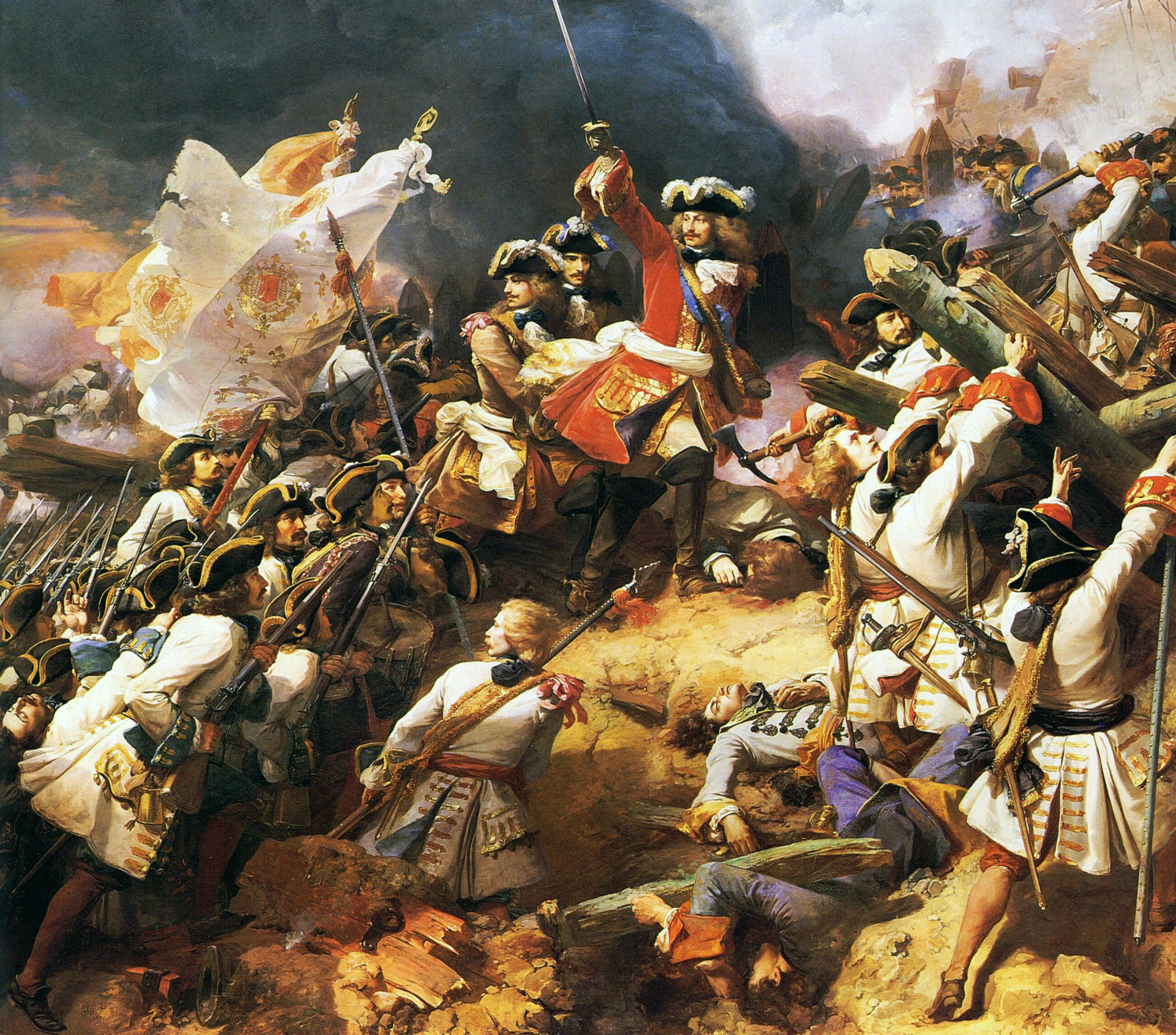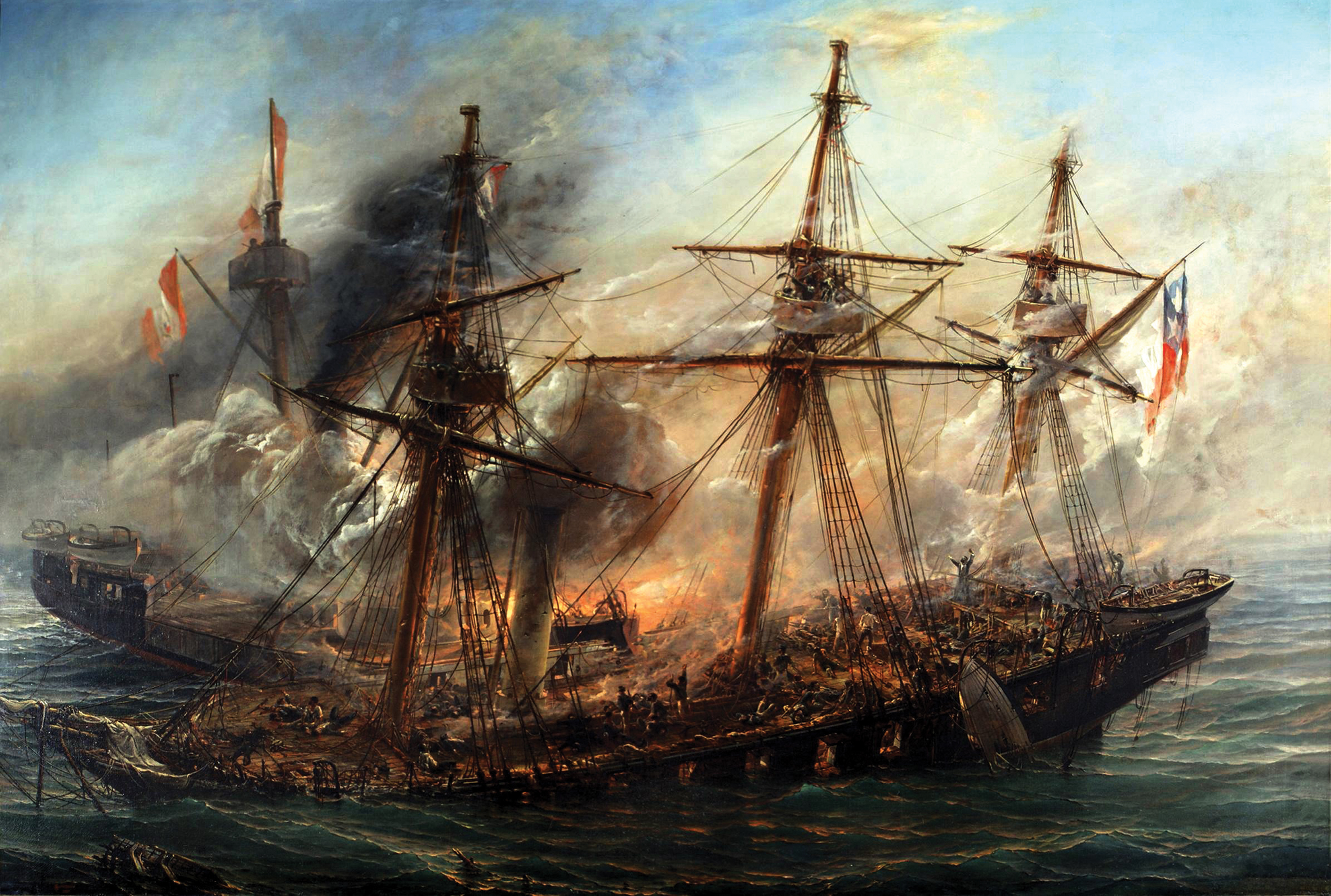|
1st Moroccan Division (1939)
The 1st Moroccan Division (french: 1re division marocaine (1939), 1reD.M) created on October 27, 1939 was an infantry division of the Army of Africa (french: Armée d'Afrique) which participated in the Battle of France (May–June 1940) during World War II. The 1st Moroccan Division participated with distinction in the Battle of Gembloux on May 15, 1940 and subsequently during the defense of Lille at the end of May 1940. Creation and dissolution * Created on October 27, 1939. Formed of serving regiments from French Morocco, the division was assigned to the north-eastern front, upon arrival in metropolitan France * Dissolution in 1940 World War II (1939-1940) Formed in Meknès on September 2, 1939, the division was sent to Oran on October 24. It disembarked at Marseille and from there travelled from Bayonne to Luchon and from Toulouse to La Rochelle before making its way by rail on November 14 to the zone de Fresnes-en-Woevre, Vigneulles-les-Hattonchâtel and Sponville. ... [...More Info...] [...Related Items...] OR: [Wikipedia] [Google] [Baidu] |
French Army
The French Army, officially known as the Land Army (french: Armée de Terre, ), is the land-based and largest component of the French Armed Forces. It is responsible to the Government of France, along with the other components of the Armed Forces. The current Chief of Staff of the French Army (CEMAT) is General , a direct subordinate of the Chief of the Defence Staff (CEMA). General Schill is also responsible to the Ministry of the Armed Forces for organization, preparation, use of forces, as well as planning and programming, equipment and Army future acquisitions. For active service, Army units are placed under the authority of the Chief of the Defence Staff (CEMA), who is responsible to the President of France for planning for, and use of forces. All French soldiers are considered professionals, following the suspension of French military conscription, voted in parliament in 1997 and made effective in 2001. , the French Army employed 118,600 personnel (including the Fore ... [...More Info...] [...Related Items...] OR: [Wikipedia] [Google] [Baidu] |
First Army (France)
The First Army (french: 1re Armée) was a field army of France that fought during World War I and World War II. It was also active during the Cold War. First World War On mobilization in August 1914, General Auguste Dubail was put in the charge of the First Army, which comprised the 7th, 8th, 13th, 14th, and 21st Army Corps, two divisions of cavalry and one reserve infantry division. It was massed between Belfort and the general line Mirecourt-Lunéville with headquarters at Epinal. First Army then took part, along with the French Second Army, in the Invasion of Lorraine. The First Army intended to take the strongly defended town of Sarrebourg. Bavarian Crown Prince Rupprecht, commander of the German Sixth Army, was tasked with stopping the French invasion. The French attack was repulsed by Rupprecht and his stratagem of pretending to retreat and then strongly attacking back. On 20 August Rupprecht launched a major counter-offensive, driving the French armies out. ... [...More Info...] [...Related Items...] OR: [Wikipedia] [Google] [Baidu] |
Algeria
) , image_map = Algeria (centered orthographic projection).svg , map_caption = , image_map2 = , capital = Algiers , coordinates = , largest_city = capital , religion = , official_languages = , languages_type = Other languages , languages = Algerian Arabic (Darja)French , ethnic_groups = , demonym = Algerian , government_type = Unitary semi-presidential republic , leader_title1 = President , leader_name1 = Abdelmadjid Tebboune , leader_title2 = Prime Minister , leader_name2 = Aymen Benabderrahmane , leader_title3 = Council President , leader_name3 = Salah Goudjil , leader_title4 = Assembly President , leader_name4 = Ibrahim Boughali , legislature = Parliament , upper_house = Council of the Nation , lowe ... [...More Info...] [...Related Items...] OR: [Wikipedia] [Google] [Baidu] |
Maghrebis
Maghrebis or Maghrebians ( ar, المغاربيون) is a modern Arabic term meaning "Westerners", mainly referring to the western part of the Arab world and North Africa. Maghrebis are predominantly of Arab and Berber or mixed Arab-Berber origins. Maghrebis were known in medieval times as the Roman Africans or Moors. The term ''Moor'' is derived from '' Mauri'', the Roman name for the Berbers of ''Mauretania'', land of the Moors, the Roman name for the western part of the Maghreb. Religion Historic records of religion in the Maghreb region show its gradual inclusion in the Classical World, with coastal colonies established first by Phoenicians, Greeks, and later extensive conquest and rule by the Romans. By the 2nd century common era, the area had become a centre of Latin-speaking Christianity. Both Roman settlers and Romanized Berbers converted to Christianity. The region produced figures such as Christian Church writer Tertullian (c. 155 – c. 202); and Christian ... [...More Info...] [...Related Items...] OR: [Wikipedia] [Google] [Baidu] |
Risle
The Risle (; less common: ''Rille'') is a long river in Normandy, left tributary of the Seine. The river begins in the Orne department west of L'Aigle, crosses the western part of the department of Eure flowing from south to north and out into the estuary of the Seine on the left bank near Berville-sur-Mer. Its upper valley is part of the Pays d'Ouche, its lower valley separates the regions of the Lieuvin and Roumois. The Risle is regarded as a coastal river. Fishing is common downstream at Pont-Audemer. On July 30, 2012, the Risle vanished in a ponor between La Ferrière-sur-Risle and La Houssaye. It runs underground for . Its only major tributary is the Charentonne. The Risle flows through the following departments and communes: *Orne: Sainte-Gauburge-Sainte-Colombe, L'Aigle *Eure: Rugles, Beaumont-le-Roger, Brionne, Montfort-sur-Risle, Pont-Audemer Pont-Audemer () is a commune in the Eure department in the Normandy region in northern France. [...More Info...] [...Related Items...] OR: [Wikipedia] [Google] [Baidu] |
Brest, France
Brest (; ) is a port city in the Finistère department, Brittany. Located in a sheltered bay not far from the western tip of the peninsula, and the western extremity of metropolitan France, Brest is an important harbour and the second French military port after Toulon. The city is located on the western edge of continental France. With 142,722 inhabitants in a 2007 census, Brest forms Western Brittany's largest metropolitan area (with a population of 300,300 in total), ranking third behind only Nantes and Rennes in the whole of historic Brittany, and the 19th most populous city in France; moreover, Brest provides services to the one million inhabitants of Western Brittany. Although Brest is by far the largest city in Finistère, the ''préfecture'' (regional capital) of the department is the much smaller Quimper. During the Middle Ages, the history of Brest was the history of its castle. Then Richelieu made it a military harbour in 1631. Brest grew around its arsenal un ... [...More Info...] [...Related Items...] OR: [Wikipedia] [Google] [Baidu] |
Lille
Lille ( , ; nl, Rijsel ; pcd, Lile; vls, Rysel) is a city in the northern part of France, in French Flanders. On the river Deûle, near France's border with Belgium, it is the capital of the Hauts-de-France region, the prefecture of the Nord department, and the main city of the European Metropolis of Lille. The city of Lille proper had a population of 234,475 in 2019 within its small municipal territory of , but together with its French suburbs and exurbs the Lille metropolitan area (French part only), which extends over , had a population of 1,510,079 that same year (Jan. 2019 census), the fourth most populated in France after Paris, Lyon, and Marseille. The city of Lille and 94 suburban French municipalities have formed since 2015 the European Metropolis of Lille, an indirectly elected metropolitan authority now in charge of wider metropolitan issues, with a population of 1,179,050 at the Jan. 2019 census. More broadly, Lille belongs to a vast conurbation formed with the ... [...More Info...] [...Related Items...] OR: [Wikipedia] [Google] [Baidu] |
Scheldt
The Scheldt (french: Escaut ; nl, Schelde ) is a river that flows through northern France, western Belgium, and the southwestern part of the Netherlands, with its mouth at the North Sea. Its name is derived from an adjective corresponding to Old English ' ("shallow"), Modern English ''shoal'', Low German ''schol'', West Frisian ''skol'', and Swedish (obsolete) ''skäll'' ("thin"). Course The headwaters of the Scheldt are in Gouy, in the Aisne department of northern France. It flows north through Cambrai and Valenciennes, and enters Belgium near Tournai. Ghent developed at the confluence of the Lys, one of its main tributaries, and the Scheldt, which then turns east. Near Antwerp, the largest city on its banks, the Scheldt flows west into the Netherlands toward the North Sea. Originally there were two branches from that point: the Oosterschelde (Eastern Scheldt); and the Westerschelde (Western Scheldt). In the 19th century, however, the Dutch built a dyke that cuts the r ... [...More Info...] [...Related Items...] OR: [Wikipedia] [Google] [Baidu] |
Combat
Combat (French for ''fight'') is a purposeful violent conflict meant to physically harm or kill the opposition. Combat may be armed (using weapons) or unarmed ( not using weapons). Combat is sometimes resorted to as a method of self-defense, or can be used as a tool to impose one's will on others. An instance of combat can be a stand-alone confrontation or a small part of a much larger violent conflict. Instances of combat may also be benign and recreational, as in the cases of combat sports and mock combat. Combat may comply with, or be in violation of local or international laws regarding conflict. Examples of rules include the Geneva Conventions (covering the treatment of people in war), medieval chivalry, the Marquess of Queensberry rules (covering boxing) and several forms of combat sports. Hand-to-hand combat Hand-to-hand combat ( melee) is combat at very close range, attacking the opponent with the body (striking, kicking, strangling, etc.) and/or with a mele ... [...More Info...] [...Related Items...] OR: [Wikipedia] [Google] [Baidu] |




